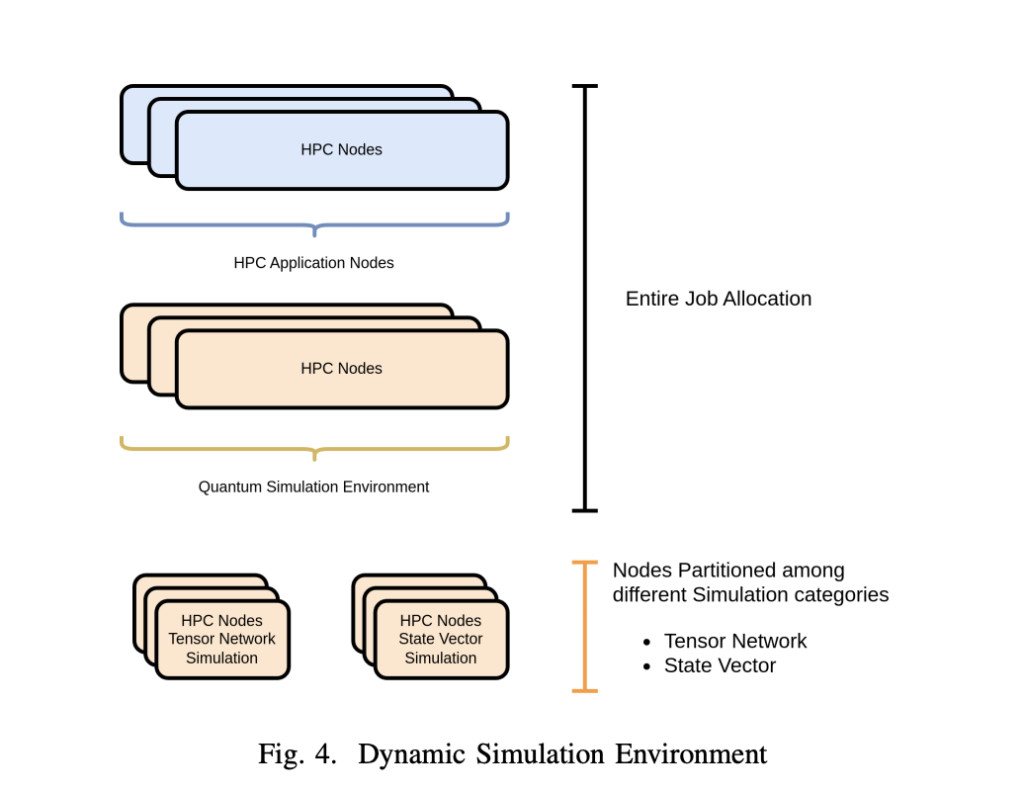Quantum computing has shown great potential to transform specific algorithms and applications and is expected to work alongside traditional High-Performance Computing (HPC) environments. Moreover, Noisy Intermediate-Scale Quantum (NISQ) devices have emerged as powerful computational platforms, but they face challenges such as limited qubit coherence times and a high chance of errors. Due to the complexity of quantum algorithms, the need for error correction becomes critical, introducing additional complexity. While developing, testing, and debugging quantum algorithms, Quantum simulators play an important role in providing a controlled, and error-free environment. It also enhances availability when there are limited physical resources.
Existing works include various approaches to integrate quantum computing into HPC environments. This integration technique utilizes the power of quantum algorithms while maintaining the reliability and versatility of traditional computing. It is divided into two main categories, loose and tight integration. Loose integration has a more flexible coupling between quantum and classical systems, whereas, tight integration utilizes quantum processing units (QPUs) into HPC nodes directly, similar to how graphics processing units (GPUs) are integrated into HPC compute nodes. This bond allows classical systems to handle traditional tasks while quantum processors solve specific problems they are best at solving. However, managing resources and optimizing performance poses challenges across these hybrid systems.
Researchers from Oak Ridge National Laboratory, Oak Ridge, TN, USA have proposed a Quantum framework (QFw) focusing on loose integration of quantum computing with HPC environments. This method treats quantum computers as separate components within the larger HPC system and focuses on on-premises integration. In this case, a quantum machine is connected to the HPC center using high-bandwidth interconnects and a distributed file system, connecting it with classical HPC systems. This framework provides a unified solution for hybrid applications with the maximum benefits of HPC for quantum simulation, with an easy transition to real quantum hardware. It also provides a flexible infrastructure on the Frontier supercomputer, supporting various quantum circuit-building tools and simulators.
The proposed QFw is designed to enable researchers to fully leverage HPC resources for quantum computing while allowing a seamless transition between simulation backends and real quantum hardware. With QFw, applications can separately allocate HPC resources for classical and quantum tasks and use any circuit composition software they prefer. The framework provides a backend to convert native quantum circuit structures into QASM 2.0, a common quantum task format. The Quantum Task Manager (QTM) layer applies specific workflows such as circuit cutting and result aggregation. The Quantum Platform Manager (QPM) handles communication with the platform, executing quantum tasks through platform-specific operations.
The QFw is evaluated using different frontends like Qiskit and PennyLane, and backends like TNQVM and NWQ-Sim. The SupermarQ benchmark is used to generate a 20-qubit GHZ circuit, and measure performance. The results obtained on evaluating QFw show the efficiency in running multiple simulations together, and completing 8 simulations in 66.97 seconds, compared to 52.47 seconds for a single simulation. This highlights the potential for saving time when simulating independent circuits simultaneously and the benefits of smart resource management. Moreover, a PennyLane application is successfully integrated, demonstrating the QFw’s flexibility in combining different frontends and backends.
In conclusion, researchers from Oak Ridge National Laboratory, have introduced a Quantum framework (QFw) offering researchers the flexibility to advance quantum research on the Frontier supercomputer without any technical barriers. It allows users to utilize any frontend circuit-building software with any backend simulation package, making it easier for researchers to focus on their tasks. The QFw allows simulations on HPC systems to go beyond normal limits and easily transition to physical quantum hardware. Its versatility allows the integration of different quantum platforms, without infrastructure or application changes. Moreover, QFw’s plugin architecture provides a common API to integrate new platforms easily.
Check out the Paper. All credit for this research goes to the researchers of this project. Also, don’t forget to follow us on Twitter and join our Telegram Channel and LinkedIn Group. If you like our work, you will love our newsletter..
Don’t Forget to join our 48k+ ML SubReddit
Find Upcoming AI Webinars here
The post Quantum Framework (QFw): A Flexible Framework for Hybrid HPC and Quantum Computing appeared first on MarkTechPost.
Source: Read MoreÂ

